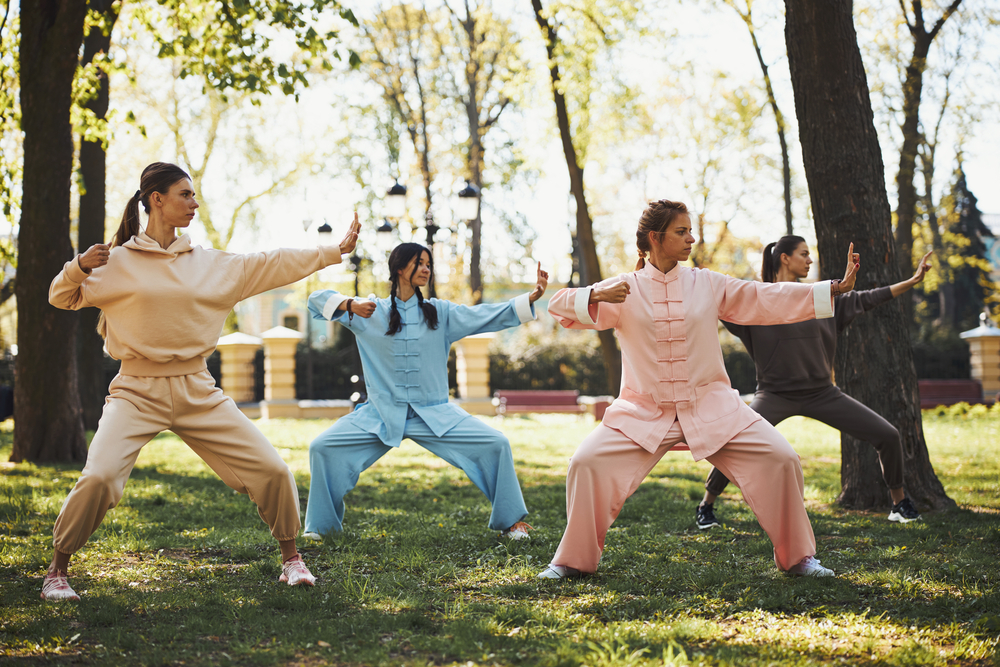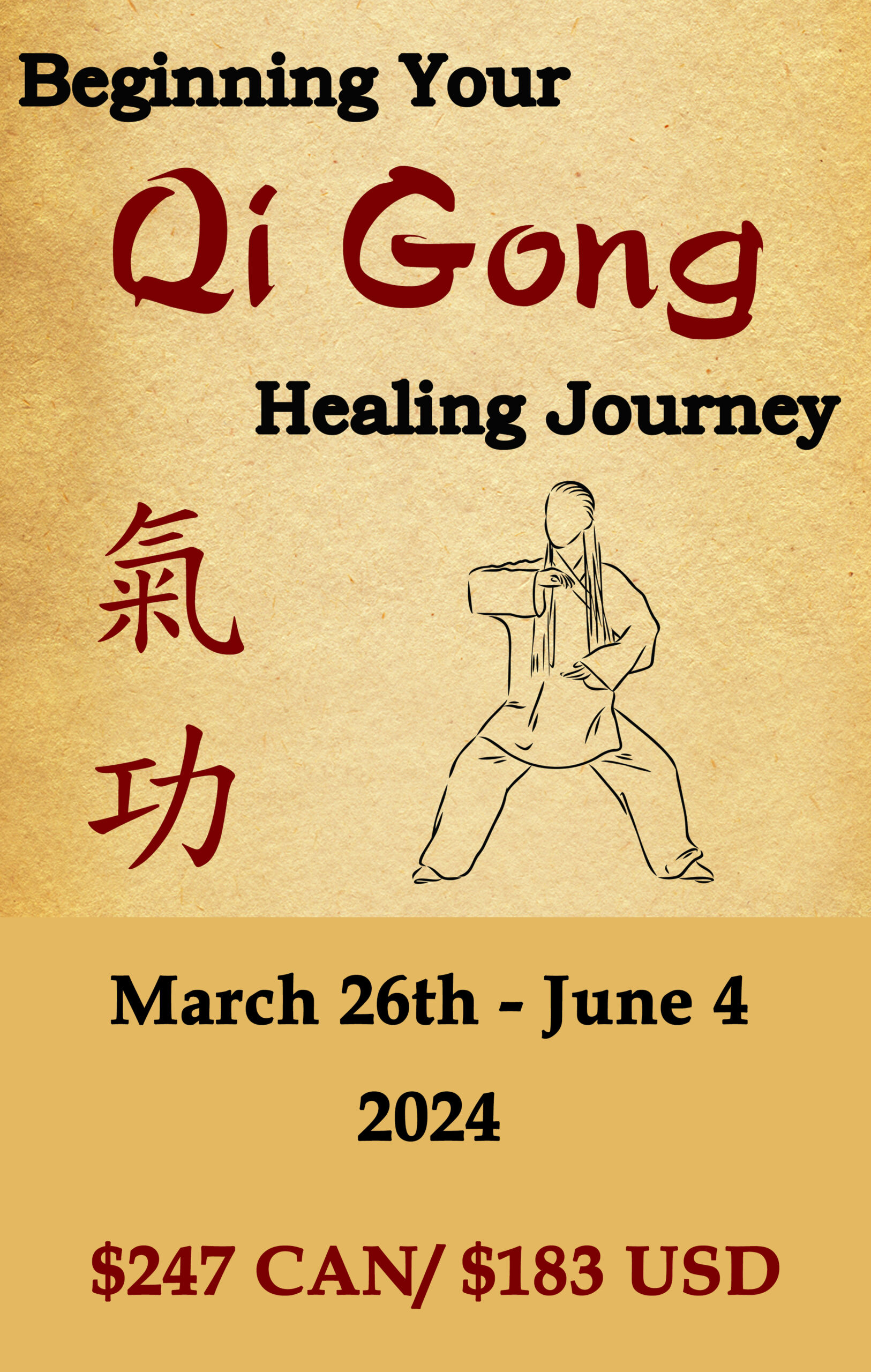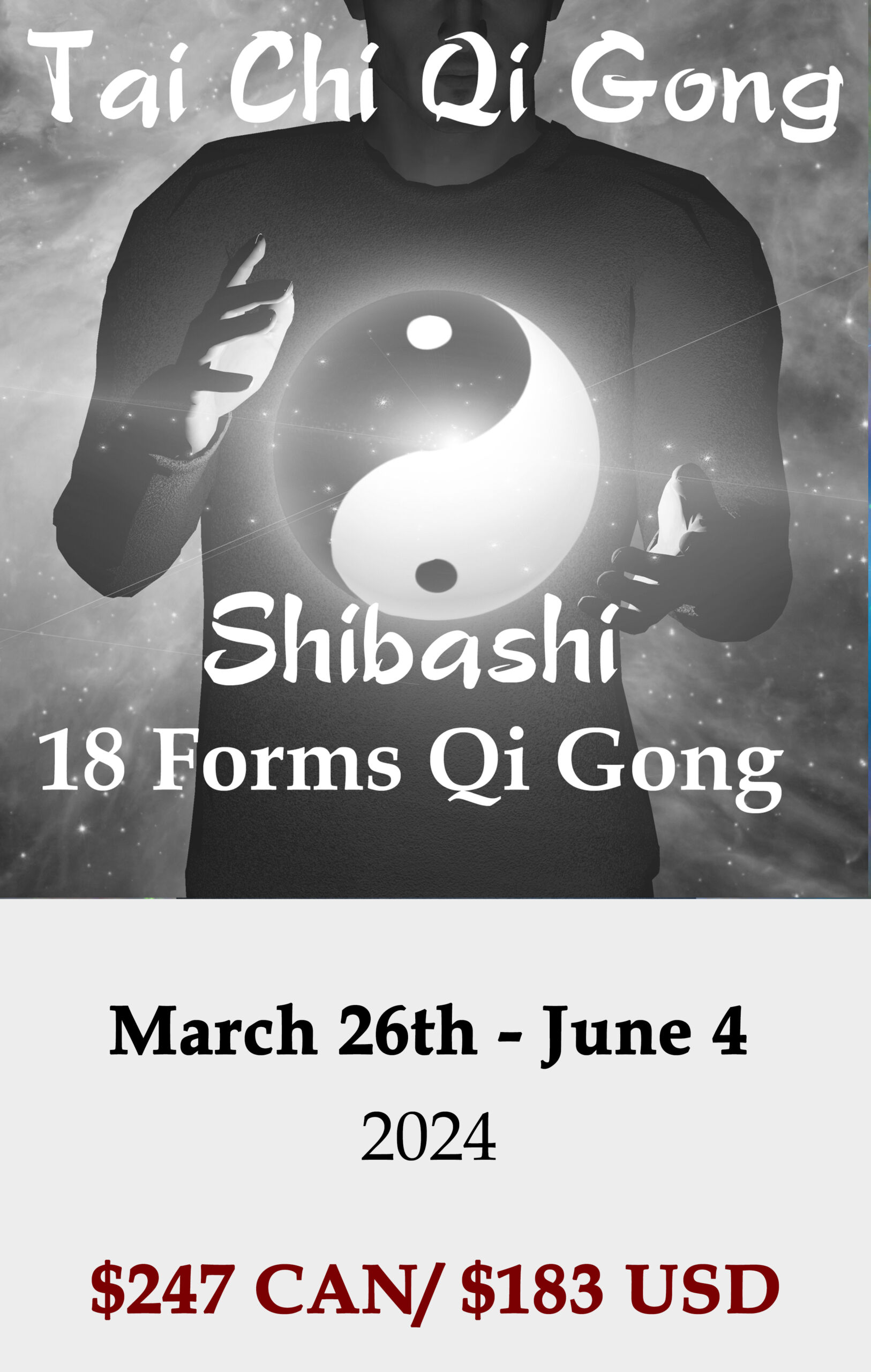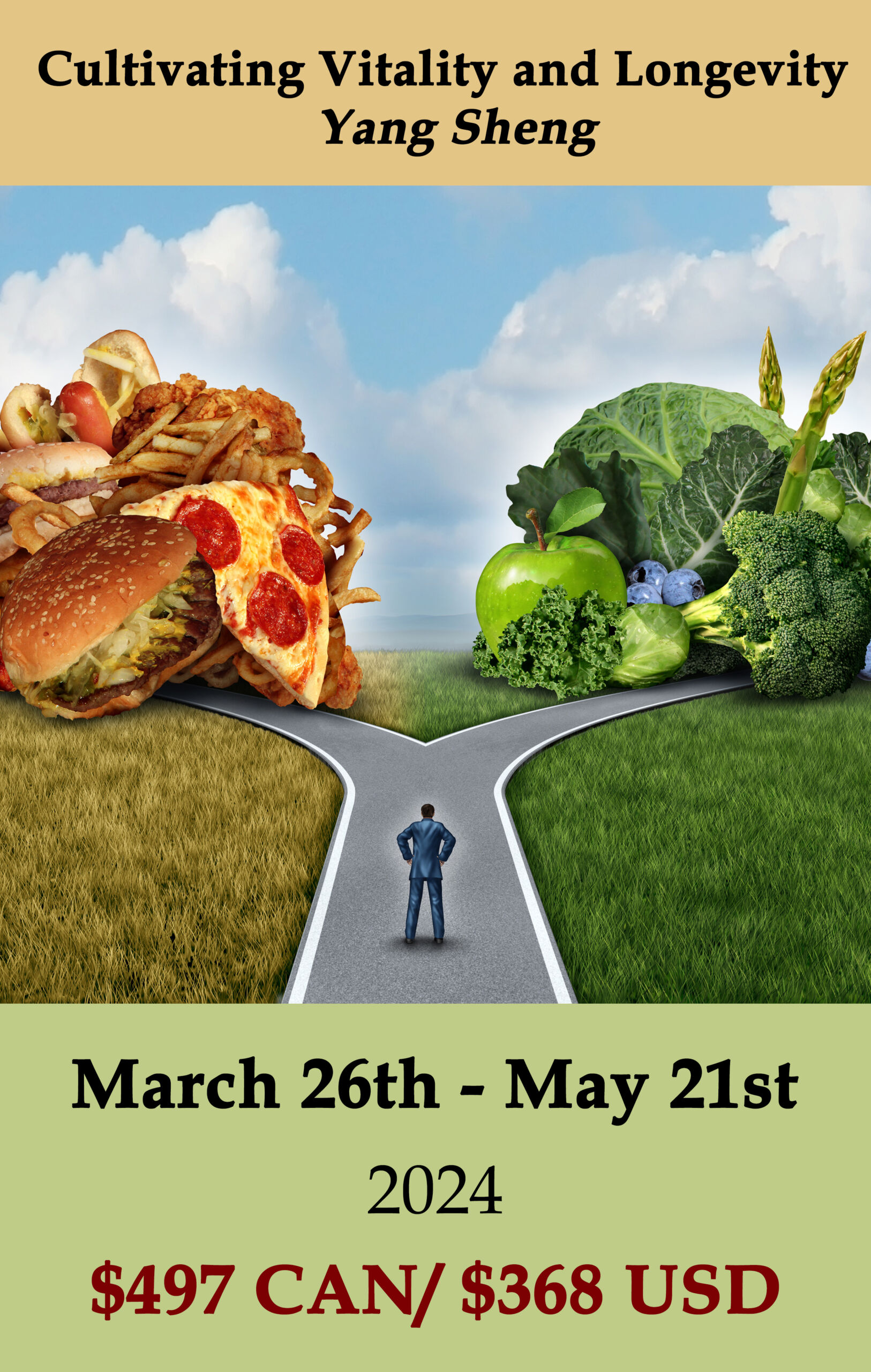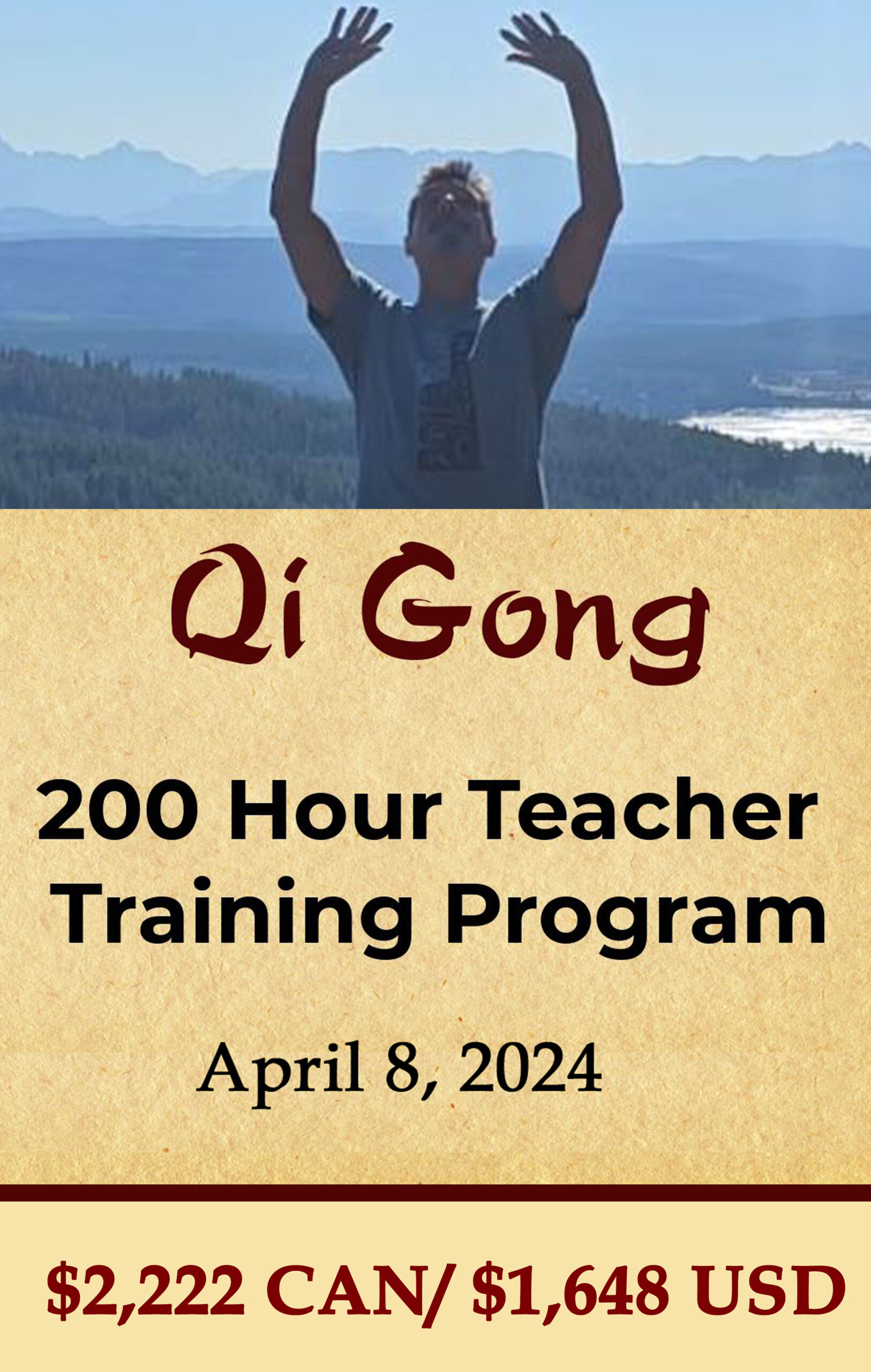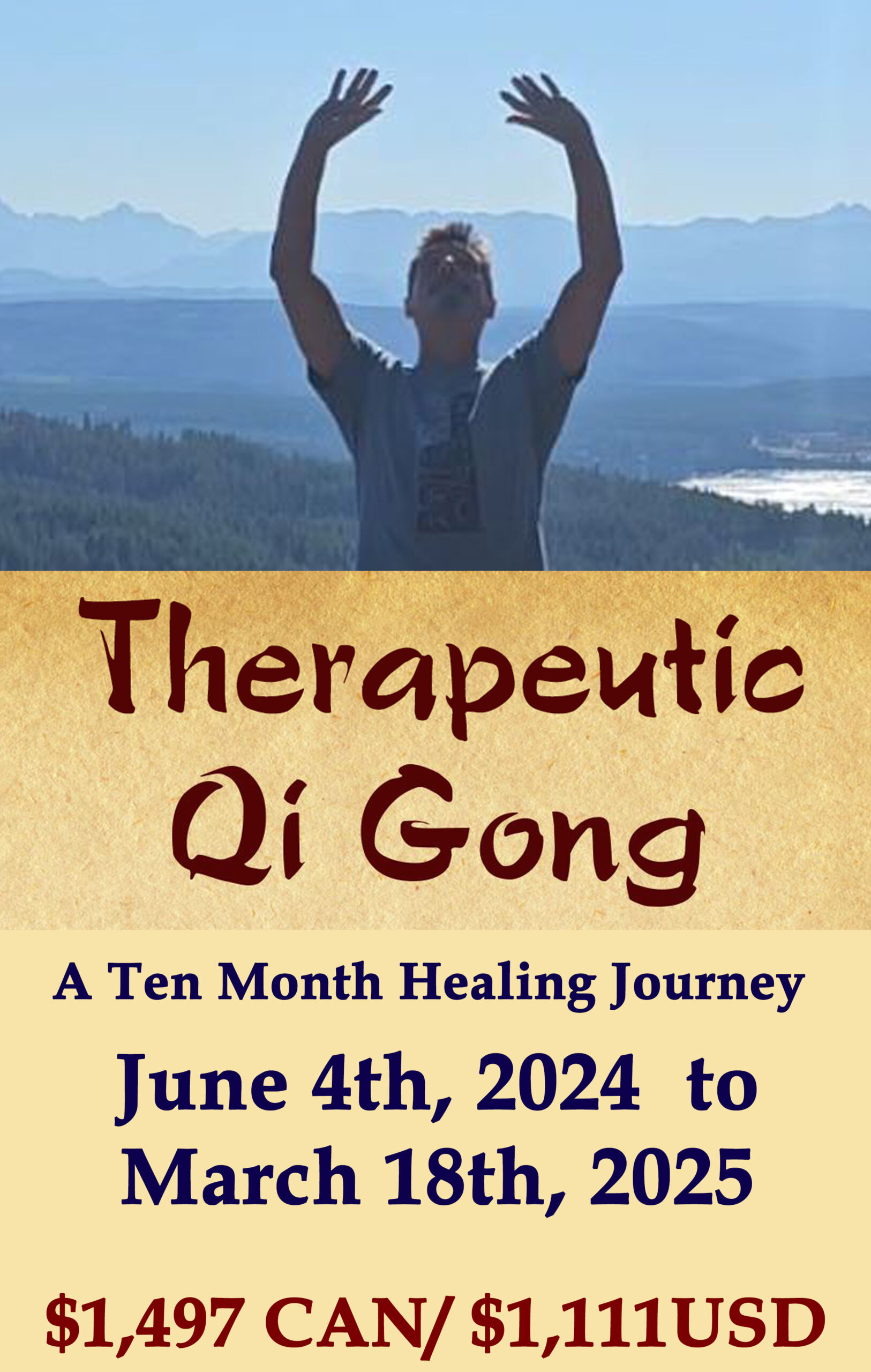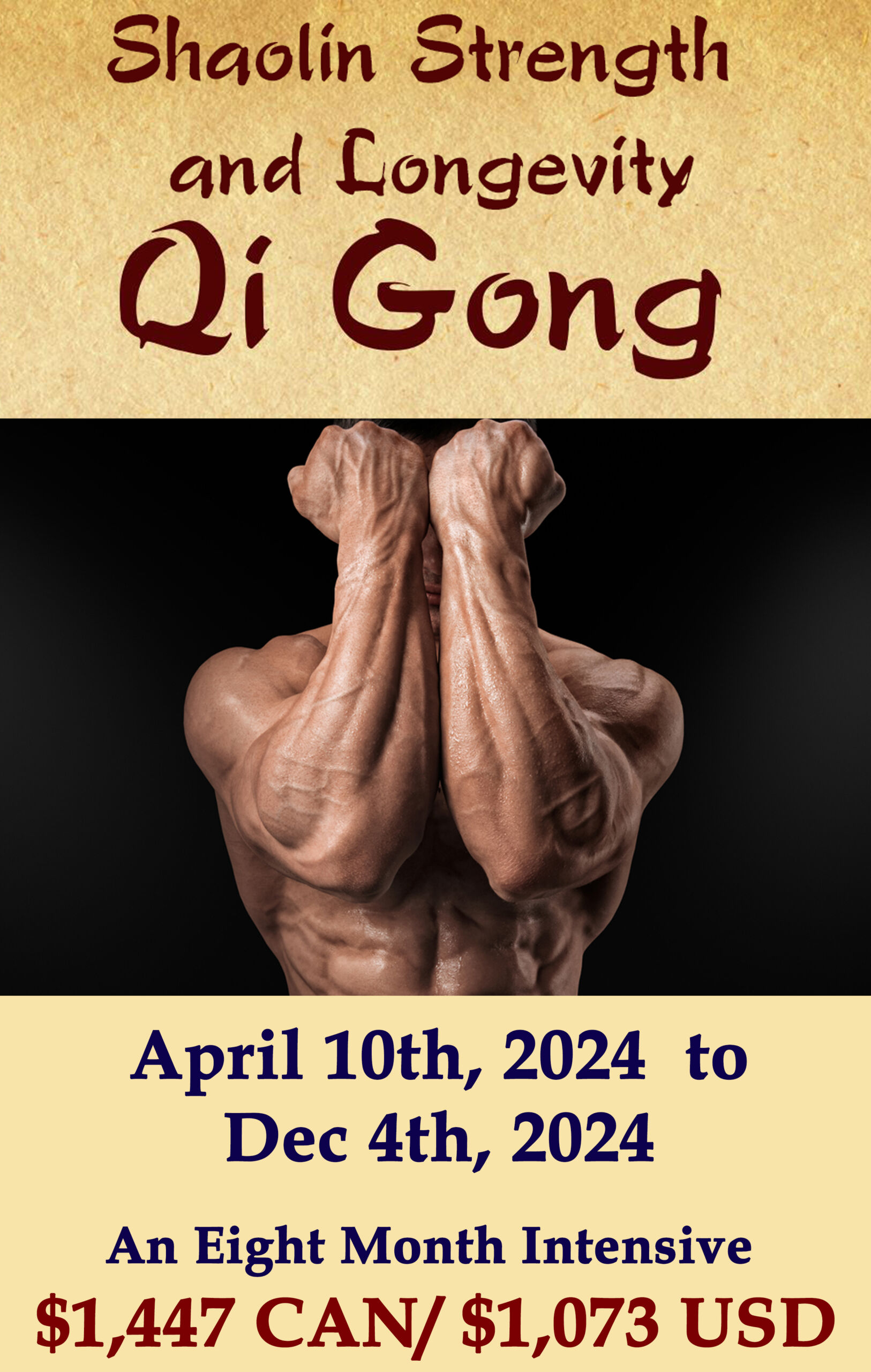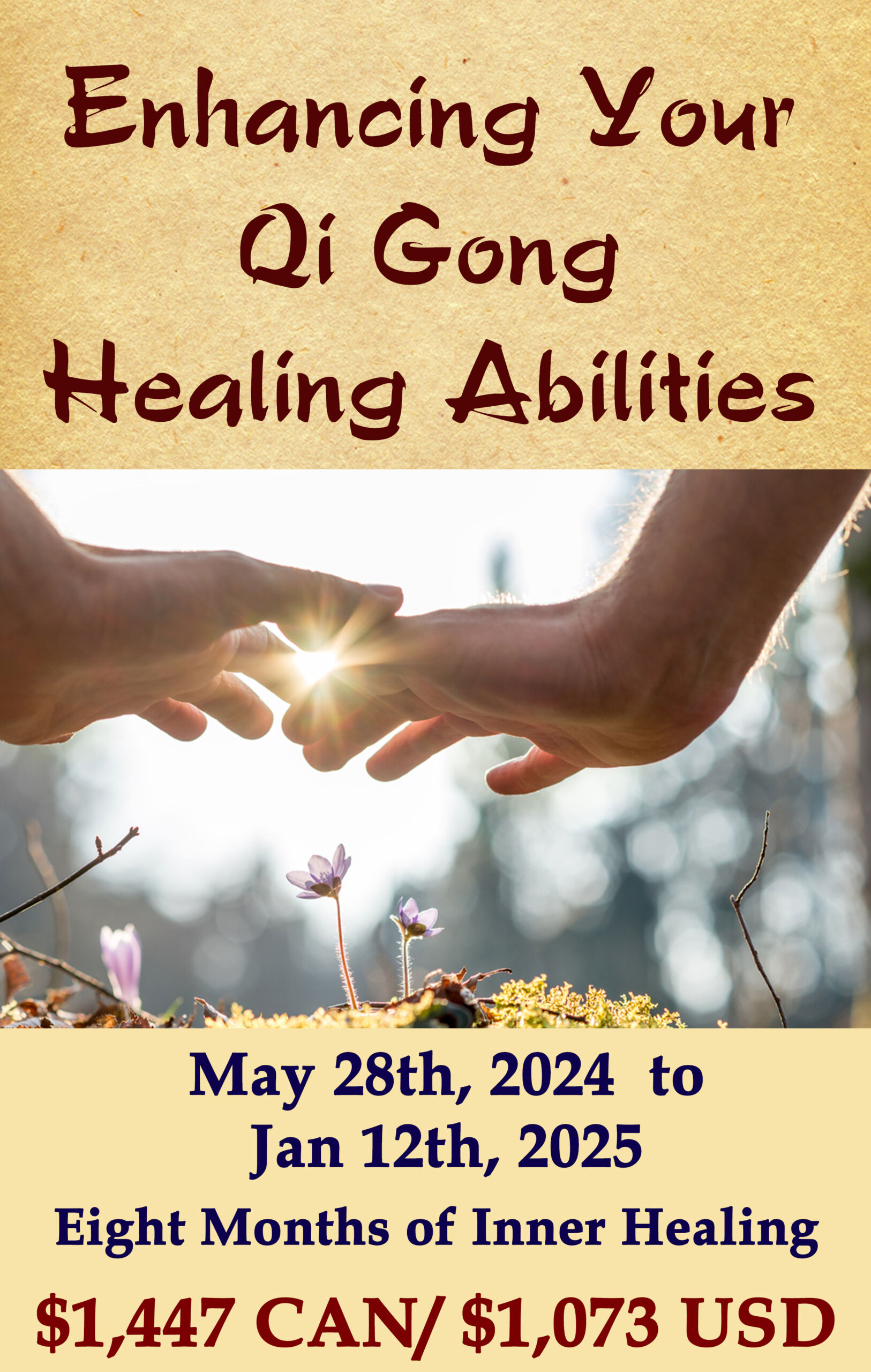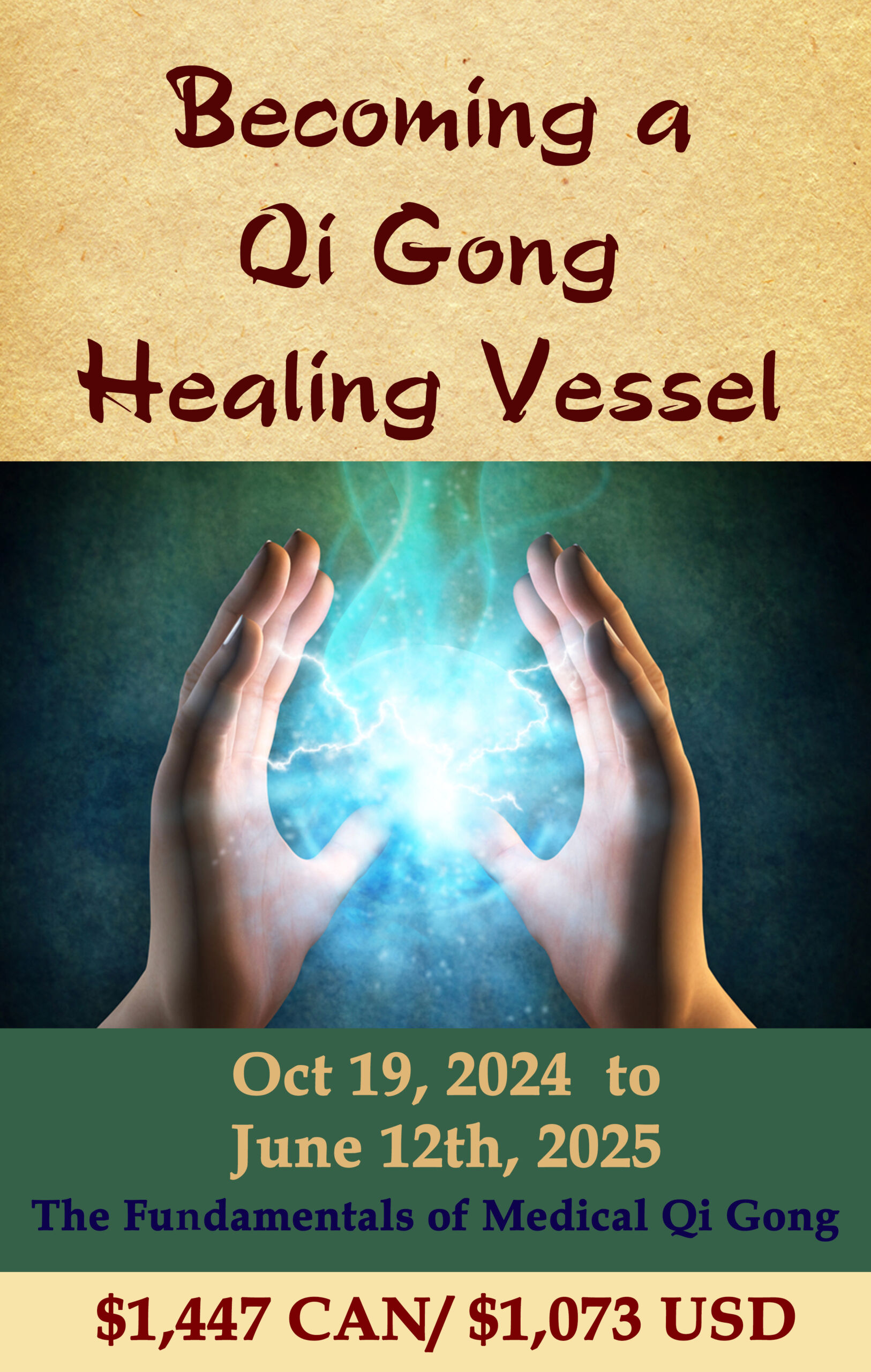
A Qi Gong class is a place to Learn, Practice, and Play
“A Qi Gong class is like going dancing.
The experience depends on the music that is playing.”
Almost all Qi Gong classes, or solo practice sessions, are going to flow to the ‘rhythm’ of a selection from the following specific opportunities of your practice. Each of us eventually develops a habitual pattern for our practice that often begins and ends in the same way.
What happens in the middle is up to the season, your needs, and your intuition. Below is a general range of options and how they fit into a many-decade relationship with your practice.
- Arriving in Your Practice
- Connecting with Qi
- Standing Qi Gong – for Alignment, Flexibility, and Co-ordination
- Traditional Practice Routines (Forms)
- Seated Qi Gong – for Deepening Your Awareness
- Breathwork
- Embodied Healing – Dao Yin and Nei Yang Gong
- Floor Work – similar to Yoga
- Meditation
- Qi Gong Theory, Principles, and Wisdom Teachings
- A Conscious Closing
This group of exercises reflects the way I usually present a Qi Gong class. Some of my classes focus more on standing, some classes on sitting, and some on stretching, or lying on an exercise mat. Some classes that I teach are also silent to allow for the nervous system to learn through the instinct of mimicking.
As you learn these exercises, I recommend starting with a few from each of the above choices.
How you decide to bring these exercises into your life, and how often, is up to you and your present circumstances.
Arriving in Your Practice
Think of the Universe as your teacher. At the beginning of each class/session, it is a tradition to offer respect to your teacher. If you remember grade school, the first thing that your teacher will do at the beginning of each class is to take attendance. The universe is asking you “Are you here? Are you aware? Are you ready?”, all you have to do is say (and be) “Present!”.
In Qi Gong practice, we say ‘present’ by extending our perceptual awareness into each of the San Dao (Sky/Heaven, Beings/Interactions, and Earth/Body). (See The Threefold Path of Daoism)
The shift of awareness is from impatient and busy time, to present and collaborative time.
Connecting to and Activating Qi
After arriving in the present and becoming available to your practice, you can reawaken and develop your awareness of Qi. The Chinese word Qi is untranslatable in any literal way into English, but Circulation, Communication, Interaction, and Aliveness are good places to start.
As your Qi Gong experience deepens, your involvement in the deeper experiences of your life also increases. Over time, your direct perception or awareness of Qi also increases.

The most common initial Qi experiences include:
-
-
- Warmth and mild vibrations in the hands
- A general dissolving sensation of the whole body
- A change in our sense of dexterity and coordination
- The whole body may feel like it is expanding like a balloon
- A deep and very personal feeling of contentment, euphoria, love, acceptance, and possibly even anger or fear.
-
If you want to explore Qi Sensations in more detail, please TAP HERE for an extensive conversation.
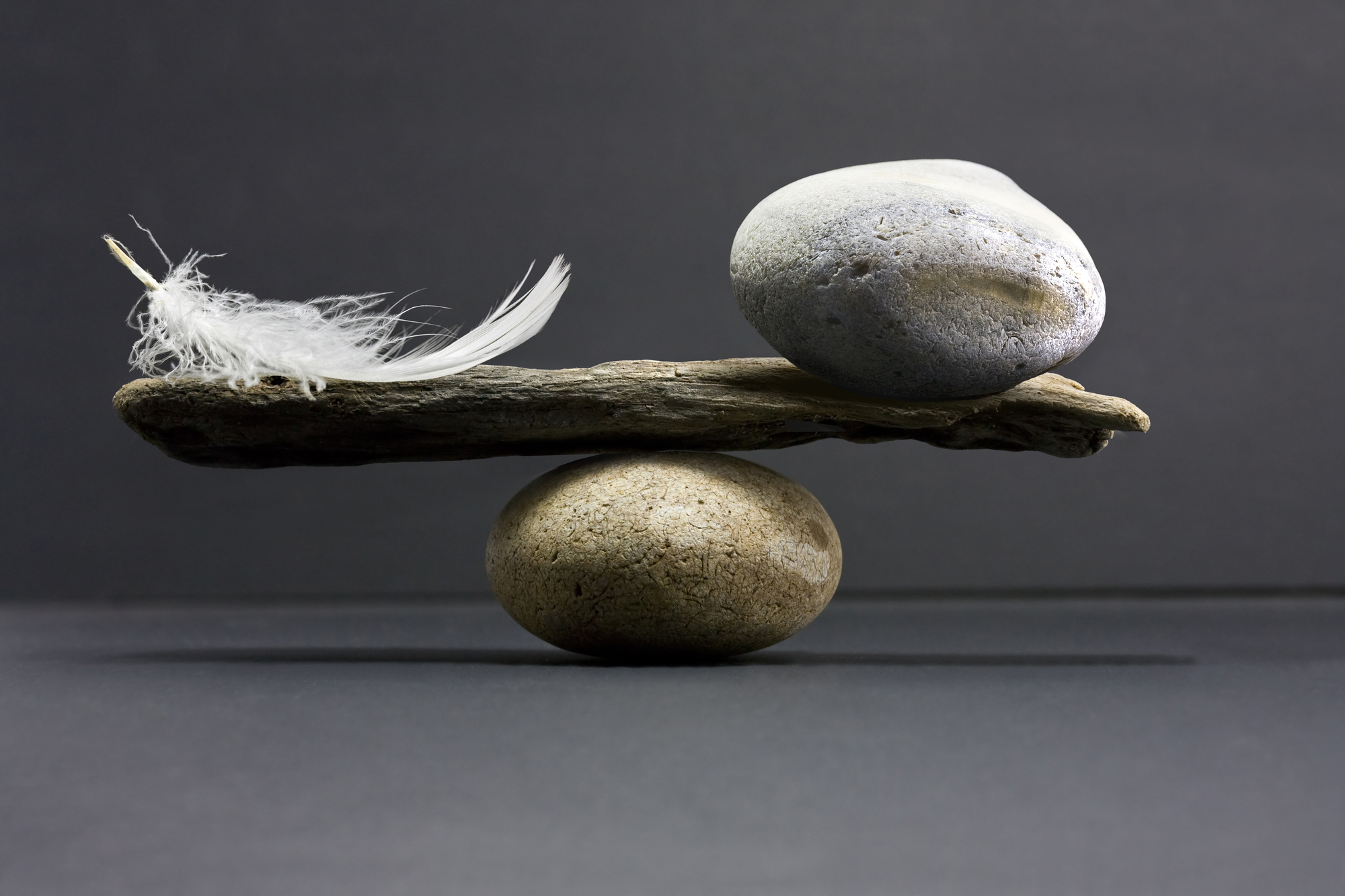
Standing Qi Gong
The foundation of Qi Gong is standing with your knees bent, feet shoulder-width apart, rooted, and relaxed. Just like you are about to play a sport or start dancing. By sinking feeling into your knees, getting centered, and relaxing unconscious tension, you will quickly become more connected to your instinctual body and self.
This ready position becomes the foundation for deep leaning, twisting, turning, extending, and contracting gestures, that help open every joint in your body. Combining movement and stillness, while making repetitive fluid gestures, helps shift your body awareness inwards, improving your sense of balance, and inducing a mild trance-like meditative state.
Qi Gong is often practiced as an intentional form of walking or hiking purposefully into the mountains or other places in nature that make you smile. This is why most of the exercises, lineages, and traditional forms are done standing – so you can practice them wherever you go to pray or connect with consciousness and reality.
On the outside, most of these exercises look easy, but on the inside, there is a mirror of the universe seeking balance, vitality, and inner peace. There are countless opportunities to go into more subtle layers of interaction and sensation. I am always grateful that, for the rest of my life, I can take a walk to the park, go into the mountains, go to the beach on a full moon, stand around a fire on the Summer Solstice, or wherever your feet take you and enjoy a few minutes or hours of conscious embodiment and play.
Seated Qi Gong
When seated, you may find yourself doing more careful versions of the standing exercises and explorations that are described in this book. More often, when seated, you will find yourself deeply immersed in breathwork and inner awareness practices (Nei Gong), self-massage, energetic cleansing, and many forms of meditation.
The experience of being in a recliner, sitting on the edge of a chair, sitting on a cushion, or a traditional meditation bench is unique. Each way of sitting allows you to enter specific States of Being and develop the patience and internal breath control; as well as the instinctual, visceral, and existential ease to become truly present.
Sitting with yourself in silence is like entering into a sacred conversation. All you need to do is listen. The act itself seems meant for internal observation, recapitulation, and discovering the wonders beyond causality and a ‘Self.
Traditional Qi Gong Forms
Another part of most Qi Gong classes is dedicated to learning and practicing “forms”. A traditional practice routine, or form, is a series of movements that are pre-choreographed and always practiced from beginning to end, much like a song or a story.
“Forms are usually practiced standing or sitting in a chair or on a mat.”
If you are in a group, it is inevitable for everyone to practice with the same timing – usually the teacher’s rhythm. Sometimes forms can be practiced to music so that you follow that rhythm. When you are ready, you can settle into your own pace and timing with the rhythm of your natural respiration. This ancient and ocean-like rhythm is uniquely yours and can help your nervous system and immune system move towards Self-Regulation and repair.
This kind of slow-motion dance, with music, or with your heartbeat and your breath, can lower blood pressure, reduce inflammation, and pain, and improve your mood in about 20 minutes. If you have an old injury, a chronic illness, or a hard time sleeping, regular practice can gradually shift your metabolism, inflammatory status, the baseline of your nervous system, and that tendon in your shoulder, a chance to gradually return to normal.
Every gesture in a traditional form has layers and layers of subtlety. As you learn more about applied Qi Gong principles of structure and movement, practicing traditional forms can feel like a laboratory for developing agility and coordination, as well as a kind of poise and presence to your posture and your life.
Some traditional Qi Gong forms are meant to be a form of Sacred Ritual or a form of Prayer. Prayer is not always to a higher being or in a state of beseeching. Many forms of prayer are expressed as gratitude and reciprocity through a tangible connection with nature and celebration of your gratitude for Life.
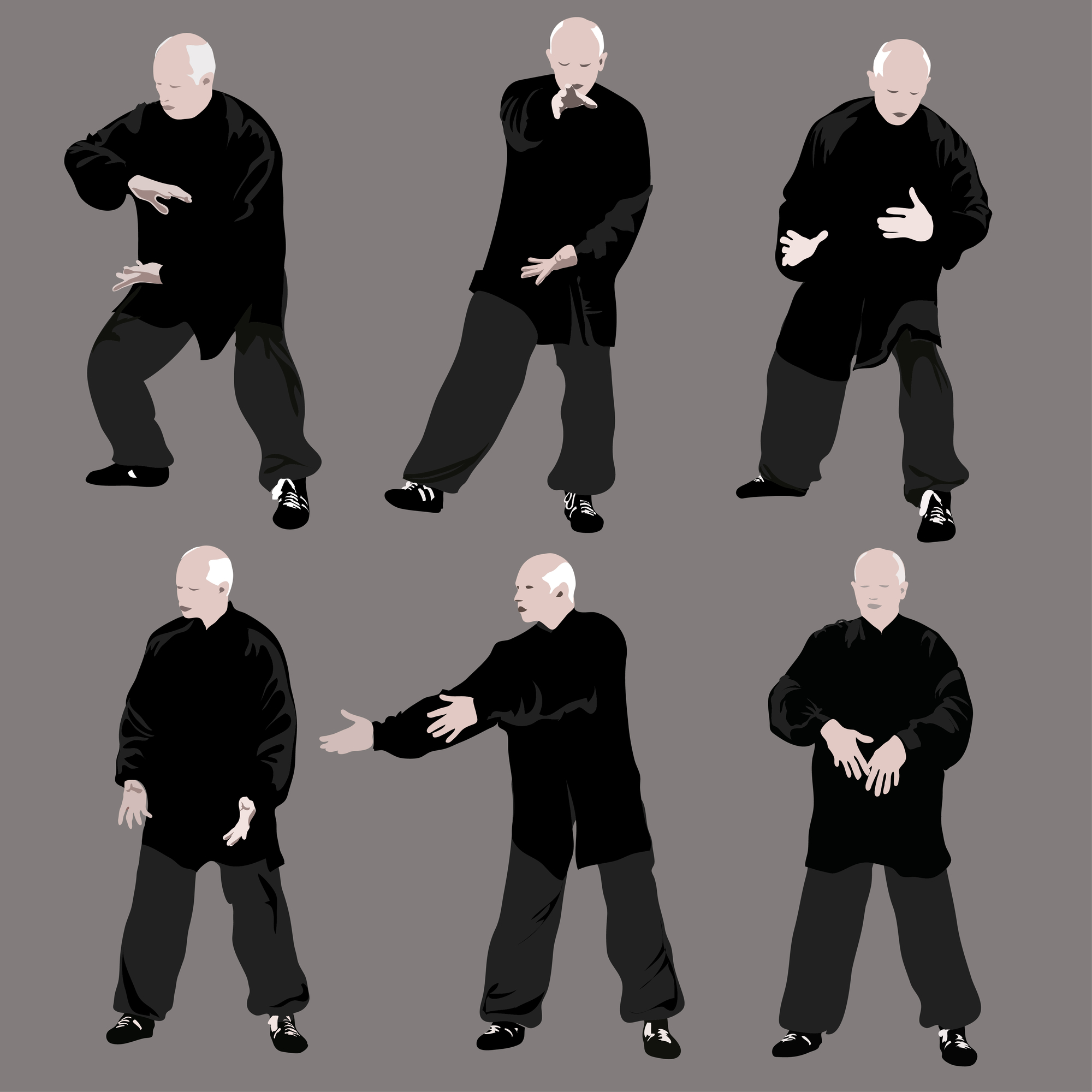
Alignment, Flexibility, and Co-ordination
Your focus, in every class (practice session), must include your embodied experience. A good beginning is to have a “love affair” with gravity and the atmosphere. This will assist you in regaining proper alignment by yielding to the most constant influences on your body. At the same time, you can explore your natural flexibilities and tensions; the forces most responsible for proper (and poor) alignment.
In Qi Gong, each of your joints is considered a gateway for Qi (Circulation). By exploring and opening all of your energy gates (your joints) you will increase Qi flow, natural flexibility, and balanced alignment.
Another aspect of opening your joints is to imagine that the atmosphere is like the ocean – with strong tides and to imagine that your body is made of kelp. By completely letting go of your body and flowing like deep ocean currents, you will find your Mind, Body, and Emotions meeting in the vulnerability of complete release.
It is easy to focus on the movements and forget the love affair. Feeling gravity, the atmosphere, or the imaginary ocean as an intimate friend or lover – enjoying a shift of attention, expectation, and boundaries are one of the many reasons this practice has been taught for so long.
It sounds grandiose, but this is about becoming one with reality – after all…
With an open and energized Body, Mind and Heart, you will naturally feel more co-coordinated, graceful, and sensually aware.
The shift of awareness is from the mechanics of posture and movement to the meaning of being moved and opened through dissolving control and boundaries – safely.
Breathwork
As you become familiar with the ‘moves’ of Qi Gong, and the details of your posture are feeling more like habits than homework, you are ready to focus on the many possibilities of your breath.
The subtle qualities of each breath can be an invitation into meditative presence and energetic Healing. There are many forms of Breathwork that Qi Gong relies on to guide you through blockages, Heal chronic illness, bring you into infinite stillness, and ecstatic bliss.
In the approach to learning and practicing Breathwork that I have developed, there are Four Branches of Breathwork.
- Sensual Breathwork
- Incremental Breathwork
- Threshold Breathwork
- State Shift Breathwork
Most Qi Gong exercises are made to coordinate each movement and gesture with your breath. As you go deeper into the study of Qi Gong, you will learn to rely on the most specific and focused forms of Breathwork to transform and heal subtle aspects of your body and being.
Dao Yin ~ Embodied Healing
The earliest known and recorded form of Qi Gong, called Dao Yin, was a part of an embodied healing system created by the Indigenous people of Asia. There are records on painted clay jars of this practice going back at least 5,000 years.
Today, Dao Yin and Qi Gong mean the same thing to most people. I feel that there should be a distinction between Qi Gong and Dao Yin practices for the clarity of the participant. Qi Gong, especially in recent years, has become a practice focused on Qi (energy sensations). Dao Yin focuses almost entirely on tangible shifts in Somatic (embodied/felt sense) experience. That may sound the same, but the distinctions in what you use as a reference for your experience and progress will take you in profoundly different directions. I will unravel those distinctions throughout this book.
In ancient times, Dao Yin focused on how illness, trauma, and chronic distress can be ‘trapped’ in your body, disorienting your Spirit/Mind. Being an Indigenous practice, even today, Dao Yin associates most kinds of illness with changes in the weather and seasons, Karmic debts of your family and Ancestors, or a vexation of minor Deities and Folk Spirits. The postures, stretches, and repetitive gestures were understood to activate your whole being (Mind, Essence, and Breath) into action; while purging your body of imbalances and latent pernicious Winds and Spirits.
Another Indigenous quality of Dao Yin is animal imitation. Some understand this to be a ceremonial dance, while some would say it is a form of ‘Breathwork induced spiritual possession’ by an animal ally that has the right power or ‘Medicine’ to help you. As a clinician, I sometimes suggest that my patients go home, induce a trance state with Breathwork, and call on a certain animal to guide you on a dream journey, or to take over your body (in a caring way) so you can learn to remember your past in other ways.
As the descendant of some Indigenous tribe, from somewhere in human history, state shift and shapeshifting practices are your birthright. I believe we have the addiction and overdose problem that we have today because, as a society, we think of these traditions as New Age, or dangerous psychologically, or as a gateway to evil. It depends on who you talk to…
With the advent of the meridian system, a clearer understanding of circulation, efficiency, the Dan Tian system (Chakras/Energy Centers), Dao Yin became a pre-alchemic system of Ceremonial Self-Care. Rich in-depth, personal meaning, and prolific in modalities to reunite with your true/authentic (Zhen Qi) or sense of aliveness, this practice is a devotion to conscious, present, alive, and embodied existence.
Dao Yin practices, both ancient and recent, mirror almost exactly the perspective and the process of modern trauma-release therapies. This has been a personal and professional interest of mine for over 15 years. I will speak more about the wounds of Trauma shortly. For now, feel into your embodied state, especially when you feel wound up or suddenly exhausted. When you are ready, and with support, if you need it, listen in to your Body and Being.
Trust your Body and notice if there are any Instinctual, Visceral or Existential memories or ‘blank’ spaces.
Trust your intuition and learn from an experienced teacher. Shifting your state through Self-Regulation, nervous system Down-Regulation, inducing the Relaxation Response are a regular part of Qi Gong and Dao Yin practice.
As you consider what your Qi Gong practice may look like, I encourage you to feel into your body and life and ask yourself if you need to reduce distress gradually, or immediately. If you feel that you will need to release stored trauma (on many or any levels), find a skilled guide to ensure you begin that journey with support and a loving witness. Finding and releasing these energetic wounds or painful thought-forms is what I think of as modern Dao Yin.
For many people, it is a much more honest place to begin. If you are not ready or comfortable working with Qi as a focus, then keep your attention on your present, felt-sense embodied sensations.
If you feel a lot of Qi sensations, and tend to get overwhelmed, talk with your teacher or an Acupuncturist.
Floor Work
“Flexibility is a sign of youthful vigor and a happy body.”
Your core muscles are as in need of some love, balance, and activation, as the number of hours you spend sitting in a chair. Toning your core muscles, and stretching out your lower back and neck, can exacerbate a previous injury or condition. Please talk to your health care provider about what you are learning and if they have any recommendations or limitations.
Seated practice is an entire universe of Qi Gong to safely explore if you presently have a limiting injury.
The most effective form of Qi Gong that you can learn to ‘Restore your Core’, is called Floor Work. In Chinese, the term Dian Gong 垫功, is used to describe all of the Qi Gong practices you would imagine happening on a Yoga mat.
The Dian Gong, or Floor Work, that I teach includes some stretching principles that I have learned from a combination of sources. I find this combination to be more systematic, safe, progressive, and just purely more enjoyable. Traditionally, this series of long winding, gently gyrating, intuitive releases, and emotional letting go, can take one hour to ninety minutes. It also involves rhythmic breathwork and somatic release, deep core muscle rejuvenation, and lucid dreaming states.
In this First Volume, I will focus on building a good foundation for your Floor Work practice. In future Volumes, this practice will be presented more completely.

Deepening Your Awareness
It is also recommended to involve yourself in 5 – 10 minutes (or more) of learning and practicing ways to directly cultivate awareness of your relationships with others and with yourself. This includes forms of meditation, aspects of Daoist Shamanic practice, and generally having fun with your experience of life.
It is good to begin each class with an idea of what awareness practice you will include. It is also wise to be intuitive about where your awareness needs to go and how to find the way there.
The shift of awareness is from guiding your practice to being guided by the quieter voices in your body, or from deeper within.
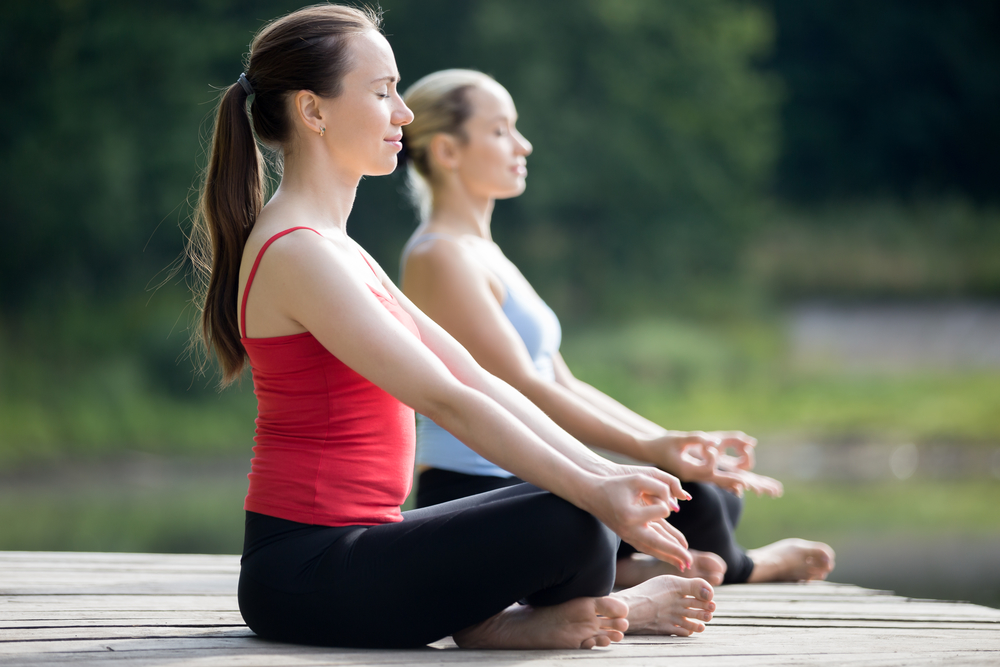
Meditation
Imagine someone you think of as having a uniquely good grasp on reality. Imagine for a moment you are some ancient Mystic, Shaman, Healer, Warrior, or Philosopher.
Feel into your experience of today. Has been a whirlwind of challenges and changes? Do you need to restore your Mind and Body?
Find your Heart, feel your existence.
Now, close your eyes and connect to some inner reservoir, creating an alignment to a very refined State of Being, a place that we all seem to know instinctually as a respite from doubt or worries. A place of wisdom.
Meditation is the natural antidote for confusion and stress.
The practice of meditation goes as far back in human history as the experience of being confused. The need to focus the mind and become very aware of your environment, and your ‘Self’, is as old as survival itself.
The busier and more intense life gets, the more we all need a way to come down or come back to our more deeply aware and contented experience of Life and Being. This does not mean you need to meditate one hour for every hour you are busy. Rather, that you may need to relearn how to respond to stress and confusion, to respond in a way that allows you to feel more present, content, and playful. Being truly content is different for everyone, but stress and confusion are universal, especially today.
Most of us meditate, in a way, as a matter of course throughout our daily lives. Every once in a while, we recover our calm, perhaps even our natural insight, by taking a moment to let the dust of too many thoughts settle.
By letting your Sky clear, your Mind will gradually see things from a larger and more objective perspective. In Qi Gong and Dao Yin, this can help you get back in touch with your Somatic sensations and free your Meridians of any disharmony.
A renowned and profoundly wise spiritual teacher named Krishna Murti once said, “There is a vast space in the mind that is the source of unimaginable energy.” He was discussing the experience of always trying to think your way out of problems; and making the point that thinking is sometimes a problem of its own. That, perhaps the Mind is more powerful when rested, expansive, and unattached to the past or future. Krishnamurti left us the simple ‘perhaps’, that the solution lies in changing the way we perceive the world and ourselves within it.
One of the best reasons to practice meditation is that it allows you to appreciate everything. Such as the changing seasons and the variations in the color of the light of day. Your positive and negative thought streams will always be begging for attention like baby birds in a nest screaming for a worm. Sincere and open curiosity, and a willingness to grow, often makes people happier because they know that almost everyone they meet is tending to their own squawking birds.
Empathy is a Superpower!
Imagine living with a sincere interest in the strangers around you. Imagine your sincere capacity to genuinely love those close to you. As a health care provider, I have many reasons to recommend meditation to my patients. Just like taking supplements for the maintenance of proper material balance within the body, meditating maintains the Mind and the emotional self. We all know the effects that smoking, drinking, and a poor diet can have on your health, and to some degree what you can do about it. But when it comes to stress, we go and have a drink, start smoking again, and get some take-out so we don’t have to make supper.
It is my firm and strong opinion that stress is the most erosive influence on human vitality, and just happens to be the easiest to treat. The Mind needs to be quiet and tranquil in order to repair itself from times of distress – just like the rest we need during and after a fever.
The problem with this prescription for stress is that it requires consistent and deeply personal effort on the part of the patient (you). This prescription also requires consistent and deeply personal attention on the part of the Doctor (also you). Sitting in silence can begin as the noisiest and most uncomfortable place you may have ever been. Sometimes, each of us has to untangle the net we cast into the ocean of thoughts, plans, and dreams, to truly be free of the conditioned, restless, lonely, and reactive Mind.
Sometimes, silence opens a vast source of aliveness, truth, and humor, that can help heal some of the deepest wounds.
Meditation is not a one size fits all conversation. There are a few options to get started. In Daoism, Qi Gong, and Dao Yin practice there are Seated, Standing, Walking, and Lying forms of meditation.
Having these options allow you to enter into your embodied breathwork and meditation practice anytime, and anywhere!
Theory and Principles
Sometimes, at the end of a class, my teachers would share an old story, a wisdom teaching, the deeper meanings of certain Chinese characters, or a poem from an ancient text.
If you are looking for a more personal and complete understanding and experience of Qi Gong, Dao Yin, and Nei Gong, there are some theories, concepts, and terminology, that will benefit your practice and possibly shift the way you see the Universe and your Self within it.
The following list of Applied Principles and Wisdom Teachings are taught in the Level One – Embodied Awareness Course.
- Duality and Non-Duality in Qi Gong practice (Wu Ji and Tai Ji)
- Permission and Connection to the Land
- Jingshen – Entering State and Coordination
- Being Rooted, Relaxed, Loose, and Ready (Fang Song Zi Ran)
- The Eight Branches of Contemporary Daoism
- Your Three Basins
- Qi Sensations, Actions, Actors, Audiences, and the Dao (De Qi, Fa Qi, Ling Qi)
- Opening Your Three Dan Tian
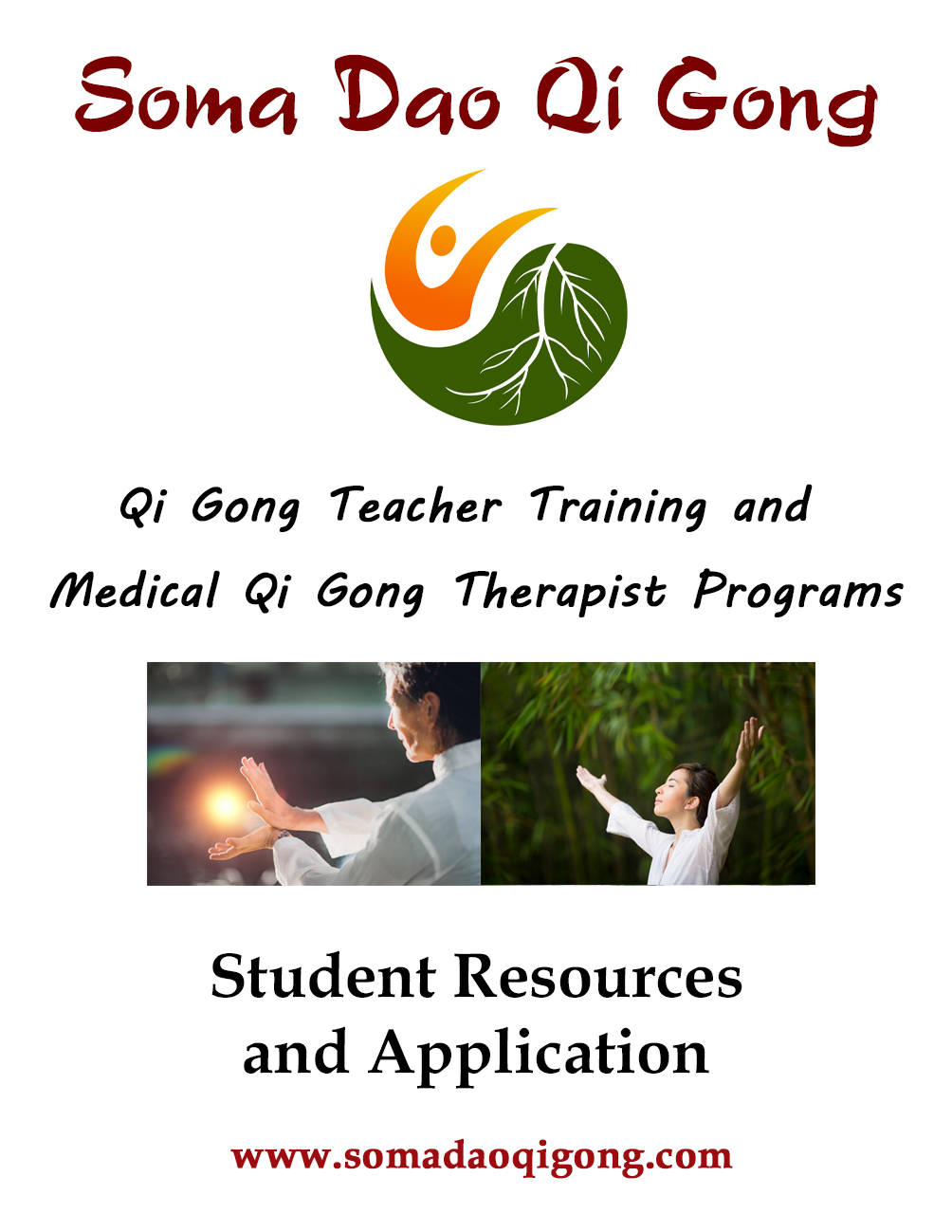
I am interested in learning more about becoming a Qi Gong Teacher and/or a Medical Qi Gong Therapist and would like to receive your MONTHLY newsletter.
YES! Send me a copy of the Student Resource Guide
(We respect your privacy)
2024 Courses with Dr. Michael Smith
Beginning April 8, 2024
Learn the skills, practices, and principles necessary to safely and successfully guide others through several kinds of Qi Gong Classes.
